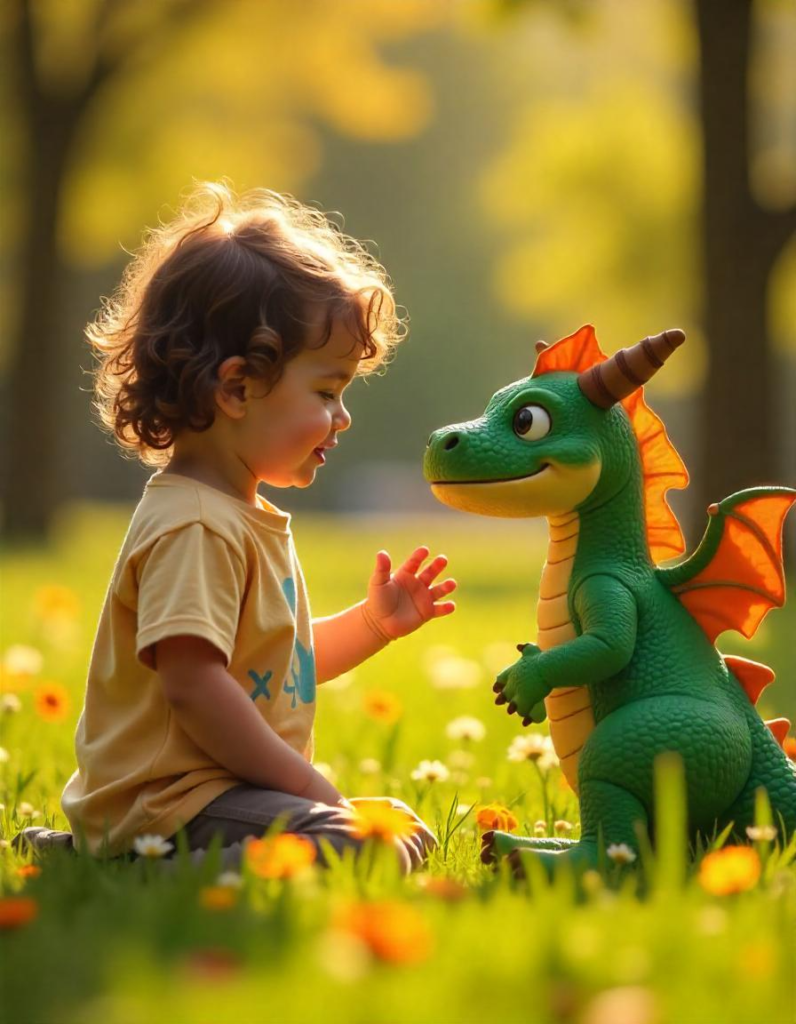Imaginary friends often spark curiosity and concern among parents. Are these whimsical companions a cause for worry, or are they a sign of something more profound? Research and expert opinions point to the latter, suggesting that imaginary friends can be a hallmark of creativity, social development, and emotional growth in children. This article delves into the phenomenon, offering insights into its benefits and addressing common parental concerns.
Understanding Imaginary Friends
Imaginary friends are fictional characters that children create and interact with. These companions can take various forms—humans, animals, or fantastical beings—and often serve as playmates, confidants, or even sources of comfort. While some parents may feel uneasy about their child’s invisible friend, psychologists reassure us that this behavior is not only normal but can be beneficial.
Signs of Creativity
One of the most compelling arguments for the positive nature of imaginary friends is their link to creativity. When children invent these companions, they engage in complex imaginative processes, weaving narratives, developing personalities, and often crafting intricate worlds.
- Enhanced Storytelling Skills: Creating and interacting with imaginary friends encourages children to develop their storytelling abilities. They construct scenarios, solve problems, and explore different perspectives.
- Creative Problem-Solving: These interactions often require children to think outside the box, finding solutions to challenges their imaginary friends encounter.
- Artistic Expression: Many children express their creativity through drawing, writing, or acting out adventures involving their imaginary friends, further developing their artistic talents.
Social and Emotional Benefits
Beyond creativity, imaginary friends can play a critical role in a child’s social and emotional development.
Building Social Skills
Interacting with an imaginary friend helps children practice social interactions in a safe, controlled environment. They learn to navigate conversations, share, take turns, and resolve conflicts.
- Emotional Regulation: Imaginary friends provide a safe space for children to express their emotions. Whether dealing with fear, anger, or sadness, children often use their invisible companions to work through complex feelings.
- Empathy Development: By imagining the thoughts and feelings of their imaginary friends, children cultivate empathy and understanding of others’ perspectives.
Boosting Self-Confidence
Imaginary friends can serve as a source of encouragement and support, helping children build confidence. They often act as a sounding board for ideas or a cheering squad during challenging times, reinforcing a child’s sense of self-worth.
When Should Parents Be Concerned?
While imaginary friends are generally a positive aspect of childhood, there are instances where parents might need to pay closer attention.
- Loneliness or Isolation: If a child prefers their imaginary friend over real-world interactions consistently, it may indicate underlying issues with social skills or self-esteem.
- Persistent Emotional Distress: If a child’s imaginary friend frequently highlights themes of fear or distress, it might be worth exploring these emotions further with a professional.
Encouraging Healthy Imagination
As parents, fostering a child’s imagination can have long-lasting benefits. Here are some ways to nurture creativity and ensure that imaginary friends remain a healthy part of development.
- Engage in Creative Play: Participate in your child’s imaginative games. This not only strengthens your bond but also encourages their creativity.
- Provide Creative Outlets: Offer opportunities for artistic expression through drawing, writing, or storytelling. This helps channel imaginative energies productively.
- Open Communication: Discuss your child’s imaginary friend with curiosity and openness. Understanding their role can provide valuable insights into your child’s thoughts and feelings.
Our Organization’s Commitment
At jewel autism center, we understand the importance of nurturing creativity and emotional development in children. Our programs are designed to support parents and children through expert guidance, creative activities, and developmental resources. By fostering environments that encourage imagination, we help children build the foundations for a successful, emotionally balanced future.
FAQs
Are imaginary friends normal for all children?
Yes, many children between the ages of 3 and 8 develop imaginary friends. It is a common and normal part of childhood development.
Do imaginary friends indicate loneliness?
Not necessarily. While some children may create imaginary friends during lonely times, these companions often serve as a creative outlet and a way to explore social interactions.
Can imaginary friends affect a child’s perception of reality?
Generally, children understand the difference between fantasy and reality. Imaginary friends are a safe way for them to explore ideas and emotions without confusing them with real life.
Should parents interact with their child’s imaginary friend?
Yes, engaging with your child’s imaginary friend can encourage communication and give insights into your child’s thoughts and feelings.
What should I do if my child prefers their imaginary friend over real friends?
If this becomes a persistent issue, consider gently encouraging more social interactions and, if necessary, seek guidance from a child psychologist.
When do children typically stop having imaginary friends?
Most children naturally outgrow their imaginary friends by the time they reach school age, though some may continue for a little longer.
In Summary
Imaginary friends are a fascinating and normal part of childhood that signals creativity, emotional intelligence, and social development. By embracing and encouraging this aspect of your child’s life, you support their growth in numerous beneficial ways. Remember, fostering creativity today builds the thinkers, leaders, and innovators of tomorrow.

